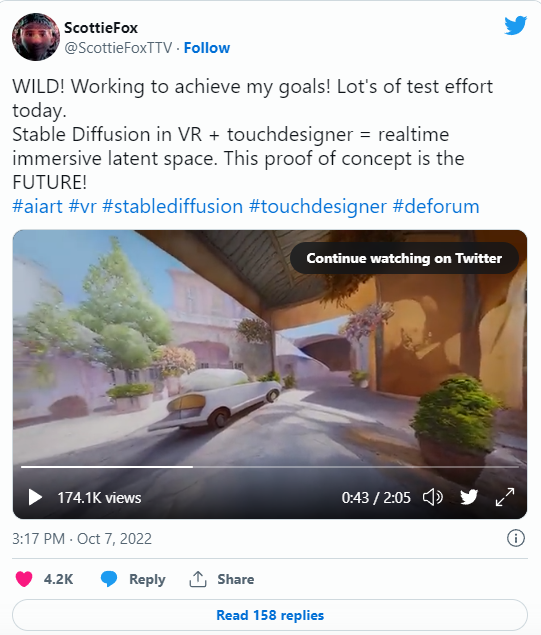The Future of Hyper-Personalization in AI and Marketing
Written on
Chapter 1: Understanding Hyper-Personalization
Artificial Intelligence (AI) has permeated various aspects of our daily lives. Algorithms influence everything from what we encounter on social media platforms to our compatibility on dating apps. They account for a significant portion of trading activities in financial markets and even assist us with basic tasks like grammar correction in our communications. Additionally, these systems unlock our devices through facial recognition and interpret our spoken commands.
This brief overview only scratches the surface of the vast capabilities of AI. The ongoing evolution of computing technologies and AI methodologies implies that such advancements will become increasingly integrated into our lives. This article delves into hyper-personalization, examining its current applications and future potential. While some elements may appear futuristic, many of these developments are already unfolding, and the anticipated innovations are closer than we might think. Let’s delve into the details!
Section 1.1: Defining Hyper-Personalization
Hyper-personalization is the pinnacle of how brands and marketers engage with consumers in a highly tailored manner. This approach harnesses the power of AI, automation, the Internet of Things (IoT), and big data. Formally, hyper-personalization involves utilizing artificial intelligence alongside historical and real-time data to deliver specifically curated content to both existing and prospective customers. This strategy enables businesses to foster unique interactions that cater to individual preferences, minimizing the noise of irrelevant options and showcasing only what customers are likely to purchase.
Section 1.2: Current Applications of Hyper-Personalization
One of the most notable examples of hyper-personalization is Netflix. The company is recognized for leveraging data science to enhance user experience through personalization in media. By utilizing a variety of data points collected within the app, Netflix can recommend shows, alter cover art, and even create new genres based on viewer habits. For example, when Netflix identified that viewers who enjoyed the BBC version of "House of Cards" also favored films featuring Kevin Spacey, they capitalized on this insight to produce the successful U.S. adaptation.
Today, similar behavioral analytics are employed by financial institutions to recommend tailored products and services. For many, navigating the financial landscape can be daunting, and having a provider that understands their unique situation can simplify the process. By filtering out irrelevant choices and highlighting options more aligned with a customer's profile, banks can enhance user experience and drive better financial outcomes. For instance, DBS Bank in Singapore offers personalized stock recommendations based on users’ previous investment behaviors and demographics.
Privacy Considerations
One of the primary concerns surrounding the use of hyper-personalization technology is the implicit reliance on customer data to shape experiences. While businesses benefit from extensive data, customers often perceive this as an invasion of privacy. There’s a trade-off at play. For instance, Netflix monitors user interactions with content—such as when they start or stop viewing shows—and gathers additional data like location and device type. Imagine if Netflix had even broader access to data, including your viewing habits across other platforms and your social connections. This would undoubtedly enhance the accuracy of their recommendations, but at what cost? Is the pursuit of marginally better suggestions worth the compromise of personal privacy?
Chapter 2: The Intersection of AI Image Generation and Hyper-Personalization
The rapid advancements in AI image generation technology have made headlines recently. Observers have noted the impressive speed at which generated images are becoming indistinguishable from those created by humans. Furthermore, AI tools are now capable of generating video content. These generative technologies present significant opportunities. Picture this: millions of users are now crafting art through simple prompts. The potential of merging this technology with hyper-personalization is immense. Brands could create advertisements—whether still images or videos—tailored entirely to the individual’s personality and circumstances.
Imagine opening UberEats while at the beach and encountering an advertisement that resonates with your current situation. On a hot day, the app, utilizing your past purchases, concludes that you might desire ice cream. If your prior orders indicate a preference for strawberry, the app recognizes your beach location and demographic data, presenting you with a visual of someone who resembles you, joyfully enjoying a strawberry ice cream cone. The image, the ice cream, and even the backdrop are all generated, crafted specifically to align with your interests.
The implications are vast. Advertisements could be uniquely tailored to each person, allowing companies to generate marketing videos without the traditional need for sets, actors, or scripts. While this may raise concerns among creatives, the reality is that AI is progressing toward automating many of these roles, resulting in cost-effective and highly effective marketing assets.
Immersive Technology and Hyper-Personalization
Building on previous examples, the synergy of emerging technologies is set to revolutionize marketing strategies in the coming years. Recently, I came across a video by software engineer Stijn Spanhove showcasing the use of Stable Diffusion in augmented reality (AR). He demonstrated how AI-generated art can be utilized through WebAR, employing tools like three.ar.js to create AR experiences on mobile platforms.

Imagine how powerful this technology will become as AR continues to gain traction. Computer vision could provide context-specific information, allowing for real-time customization of art installations, political ads, business promotions, and community events.

Other users have also showcased Stable Diffusion in virtual reality (VR), manipulating immersive environments in real-time. The rapid growth of this technology cannot be overstated.

Imagine a VR meeting with your financial advisor in a setting designed to enhance your comfort or playing a video game where the maps adjust dynamically to your style. Envision taking a virtual tour of a new home, where furniture, appliances, and paint colors can be altered with simple commands. Such experiences are not far from becoming our new reality.
Thanks for taking the time to read! More insights to come!
Keynote: Hyper Personalization Made Possible - AI and the Future of Retail - YouTube
This keynote addresses the transformative impact of AI on hyper-personalization in retail, exploring how businesses can leverage data to enhance customer experiences.
Hyper Personalization: Future of Prospecting - Insights, Timing, Frameworks? - YouTube
This video delves into the future of hyper-personalization in marketing and sales, discussing insights, timing, and frameworks for effective prospecting.